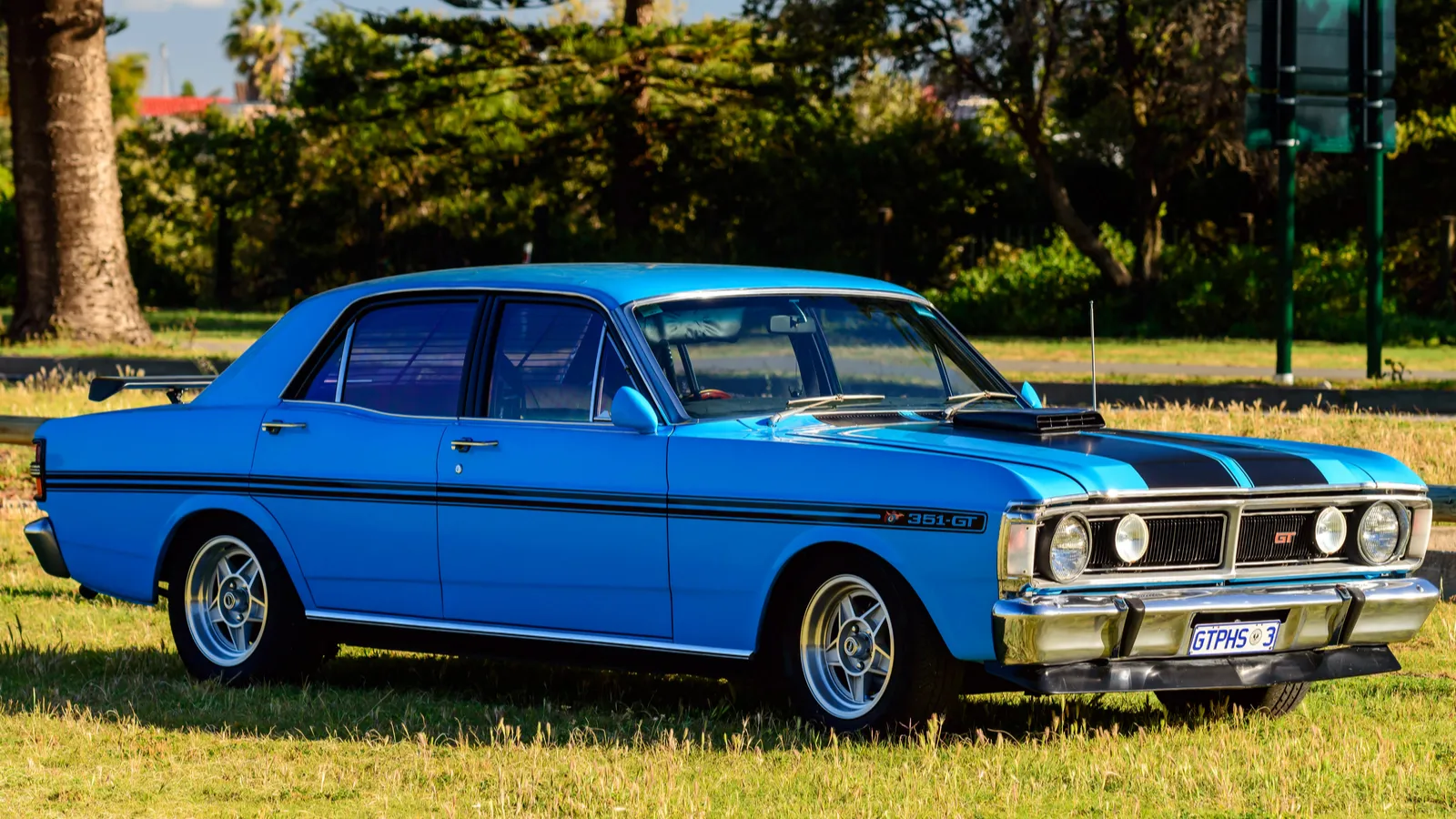
Image credits: moisseyev/Depositphotos
Australia’s Muscle Car Legacy Began in the 1960s
Australia’s golden era of muscle cars started in the late 1960s with standout models like the Ford Falcon GT and Holden Monaro. These vehicles featured large-displacement V8 engines, bold styling, and engineering tailored for city streets and racetracks, laying the foundation for a uniquely Australian muscle car culture.
Unlike their American counterparts, these classic Australian cars emphasized local flair and rugged reliability. The Holden Monaro stood out as a homegrown legend that redefined what a muscle coupe could be in the Southern Hemisphere.
Alt text: Australian Ford Falcon 351gt
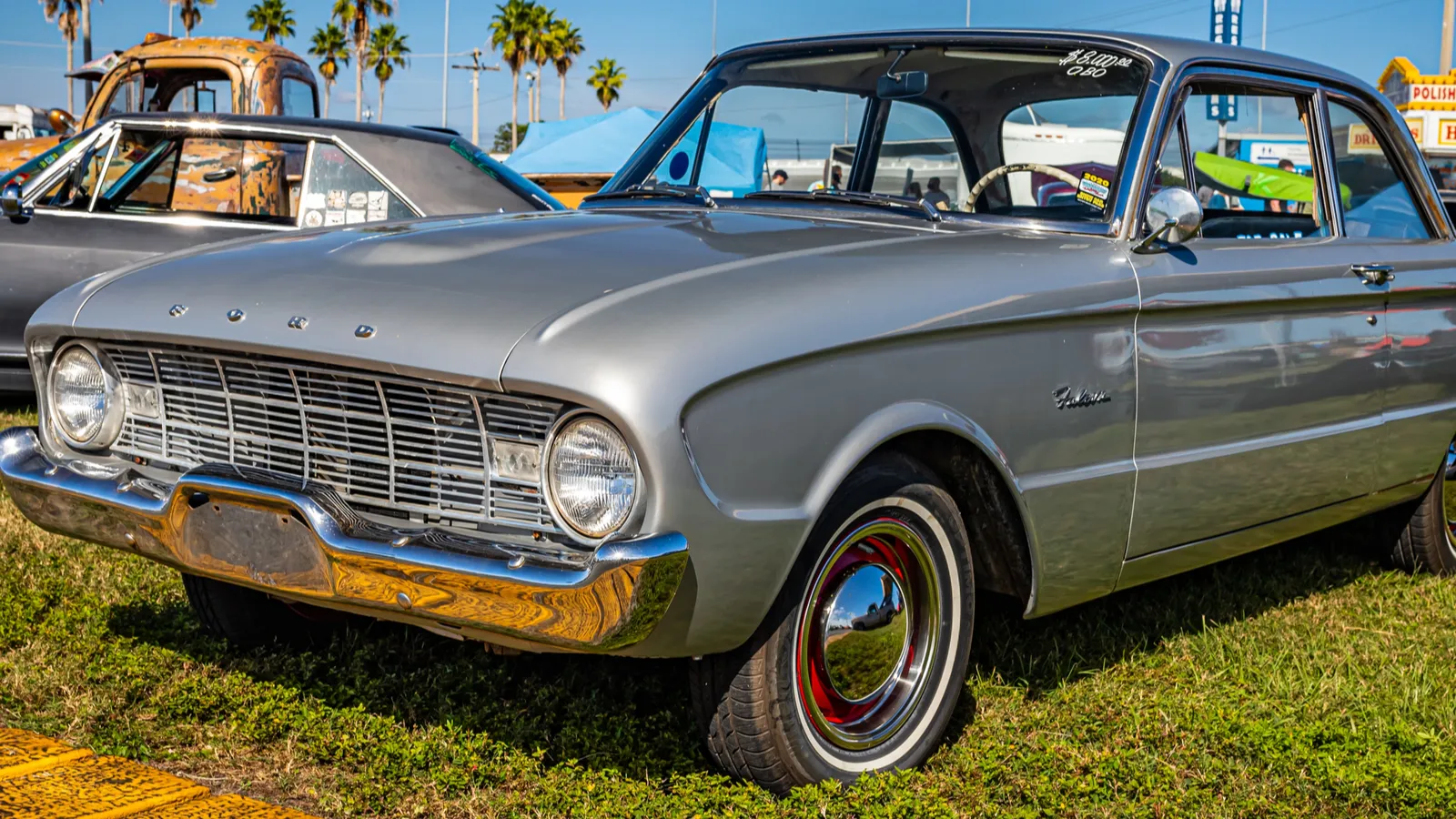
Image credits: adifferentbrian/Depositphotos
Ford Falcon GT: Australia’s Answer to the American Muscle Car
The Ford Falcon GT rose to fame as Australia’s premier muscle car. Packing a robust V8 engine and built for high-speed performance, it quickly earned credibility on both the streets and competitive circuits. Its iconic success in touring car racing solidified it as a legend in Australian automotive history.
Built with a balance of power and practicality, the Falcon GT symbolized endurance and performance. Its strong street presence and motorsport achievements make it a cornerstone of Australia’s classic car scene today.
Alt text: 1960 Ford Falcon
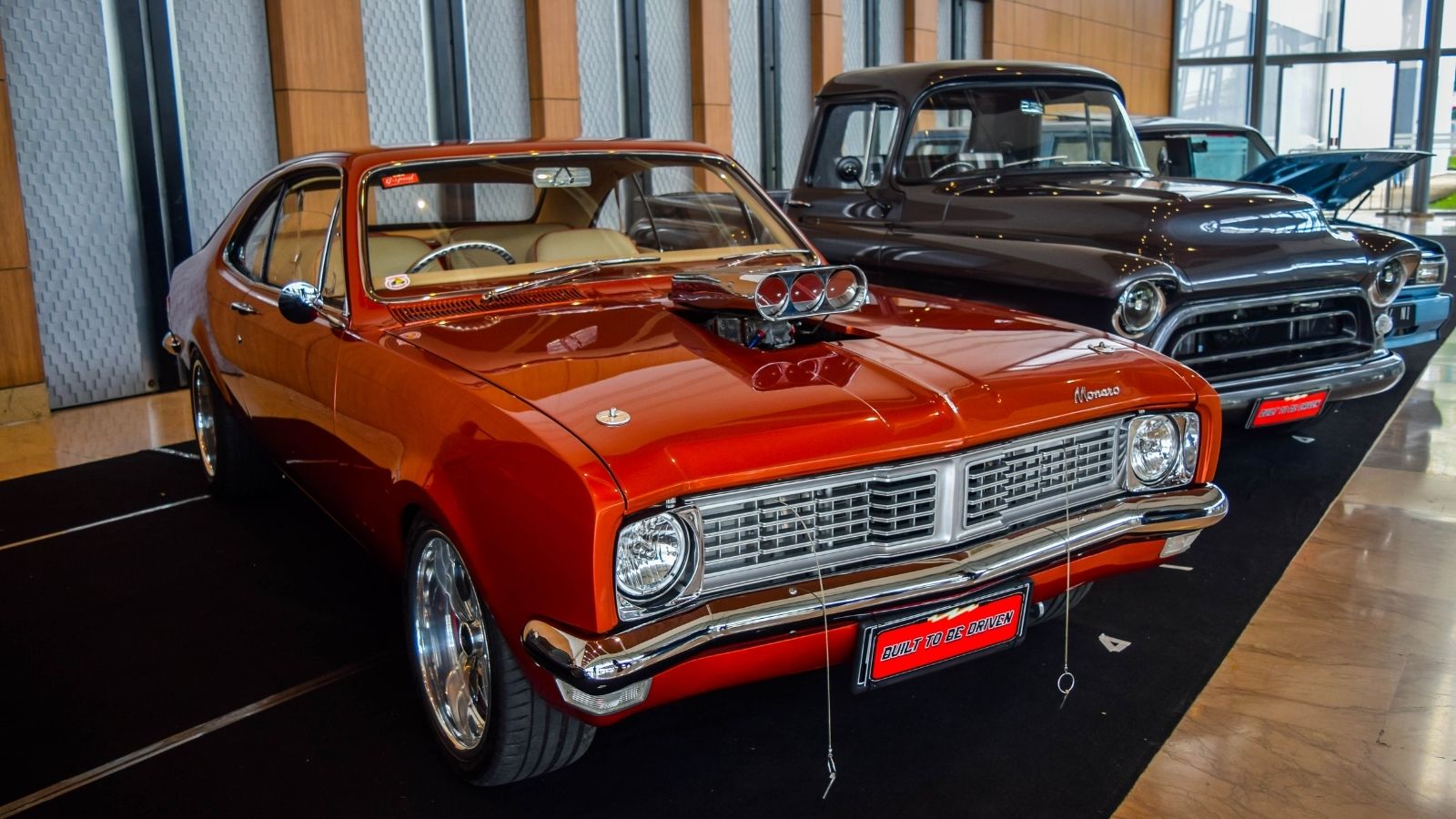
Image credits: RMT51/Shutterstock
Holden Monaro: Australia’s Most Iconic Muscle Coupe
Launched in 1968, the Holden Monaro became an instant classic in the Australian muscle car market. Its sleek design and high-performance V8 options stood as a fierce rival to Ford’s offerings, attracting enthusiasts who craved speed and style.
The Monaro’s popularity eventually went international, with exports to the U.S. and other markets. This global recognition elevated the Monaro from a local hero to an international symbol of Australian automotive innovation.
Alt text: Holden Monaro classic V8
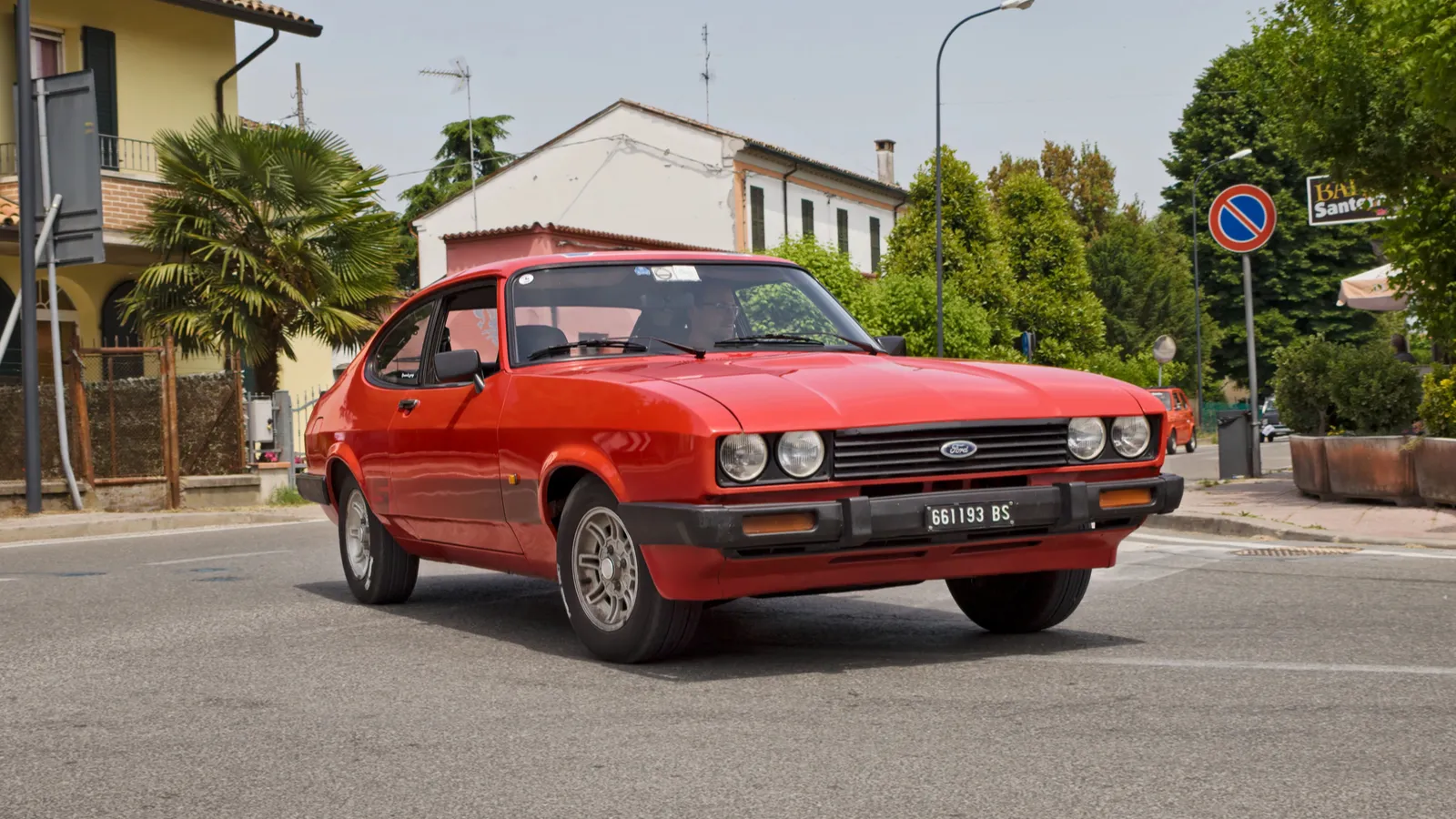
Image credits: ermess/Depositphotos
European Muscle Cars: Focused on Handling and Style
Unlike the brute-force approach of American muscle cars, Europe crafted its niche by emphasizing balance, precision, and style. Vehicles like the Ford Capri brought sporty looks and agile handling, while maintaining a refined sophistication that appealed to a broader audience.
European models typically used smaller engines but enhanced their performance through lightweight construction and chassis tuning. The result was a class of muscle-inspired cars that offered thrilling driving experiences with a touch of elegance.
Alt text: Vintage Ford Capri 16 s mk iii 1980 classic
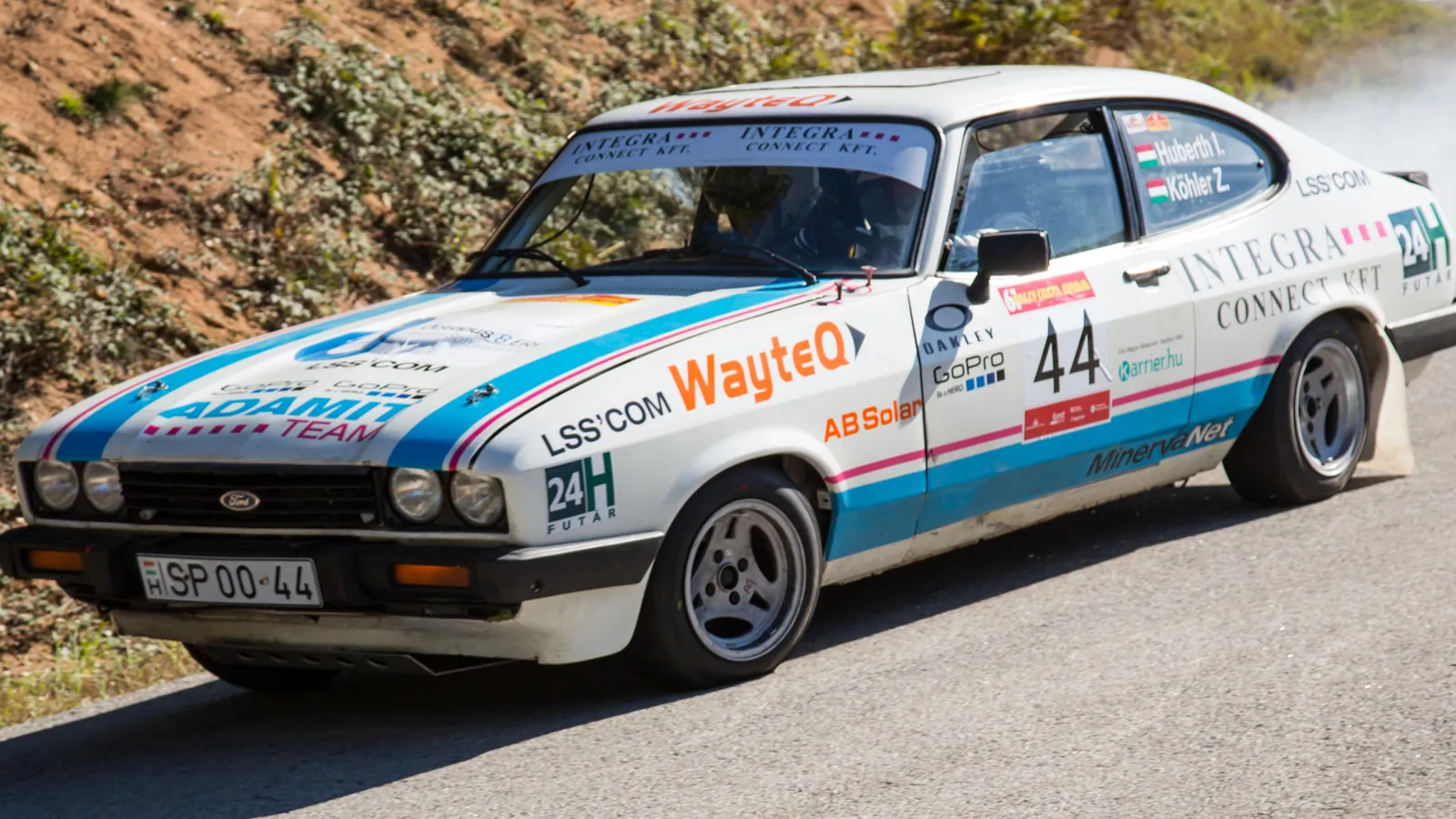
Image credits: edu1971/Depositphotos
Ford Capri: The European Take on Muscle Car Design
The Ford Capri, produced from the late 1960s through the early 1980s, was Europe’s answer to muscle car fever. With a range of engine options, including peppy V6s, and head-turning aesthetics, it excited everyday drivers looking for sporty performance without excess bulk.
Its sharp styling and nimble handling won over fans across the continent. The Capri became a muscle car icon in its own right, offering a distinctly European spin on the raw appeal of American V8 power.
Alt text: Ford Capri rally racing
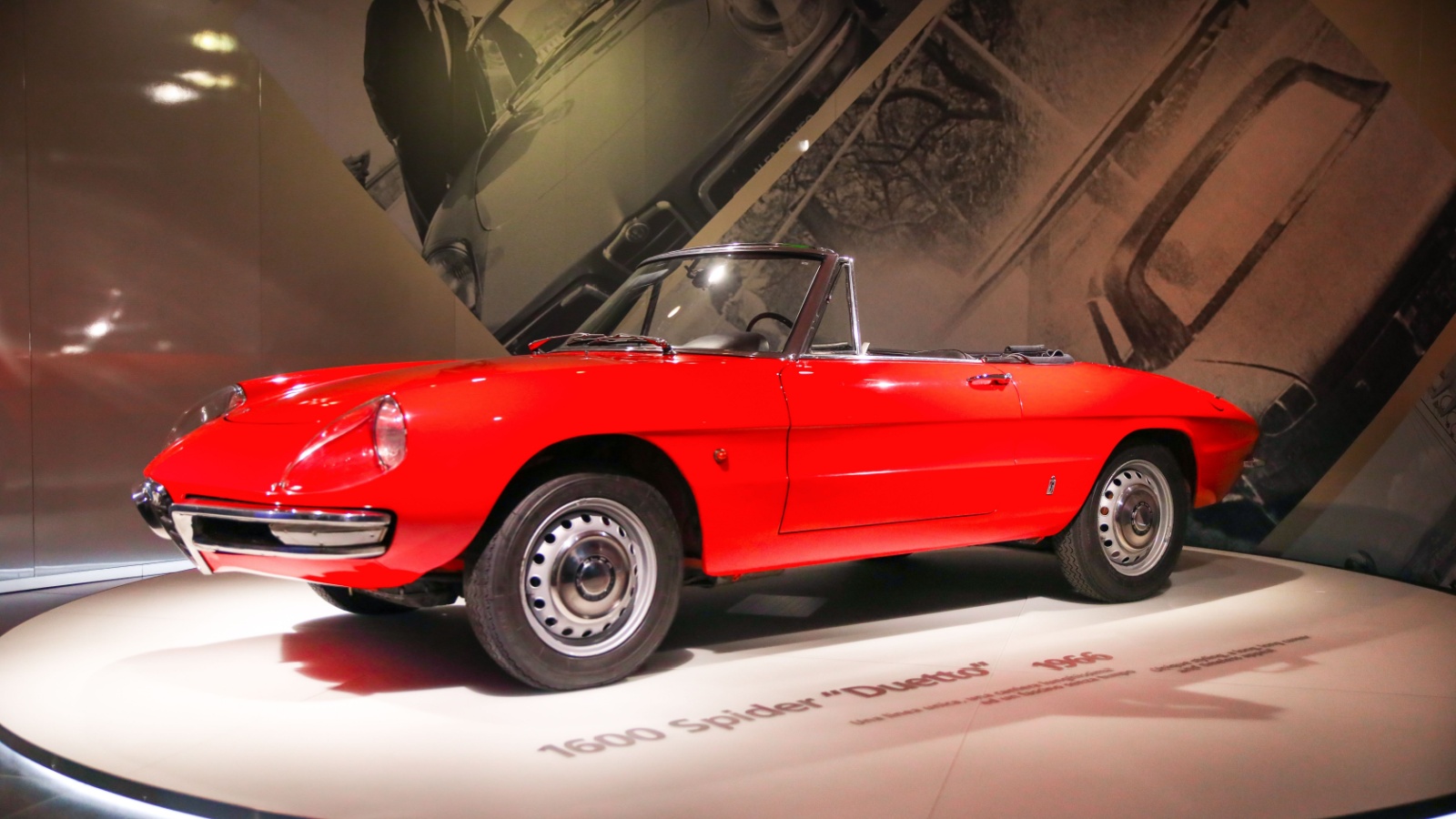
Image credits: Ion Sebastian/Shutterstock
Italian Performance Coupes Prioritized Precision
Italian carmakers such as Alfa Romeo and Lancia focused on precision handling, high-revving engines, and lightweight frames. Instead of raw horsepower, these brands favored a responsive, driver-focused approach emphasizing control and agility.
These stylish European coupes carved a unique identity within the broader performance car world. While not traditional muscle cars, they embodied a similar ethos of delivering exhilarating performance wrapped in beautiful design.
Alt text: Alfa Romeo Spider 1600 Duetto
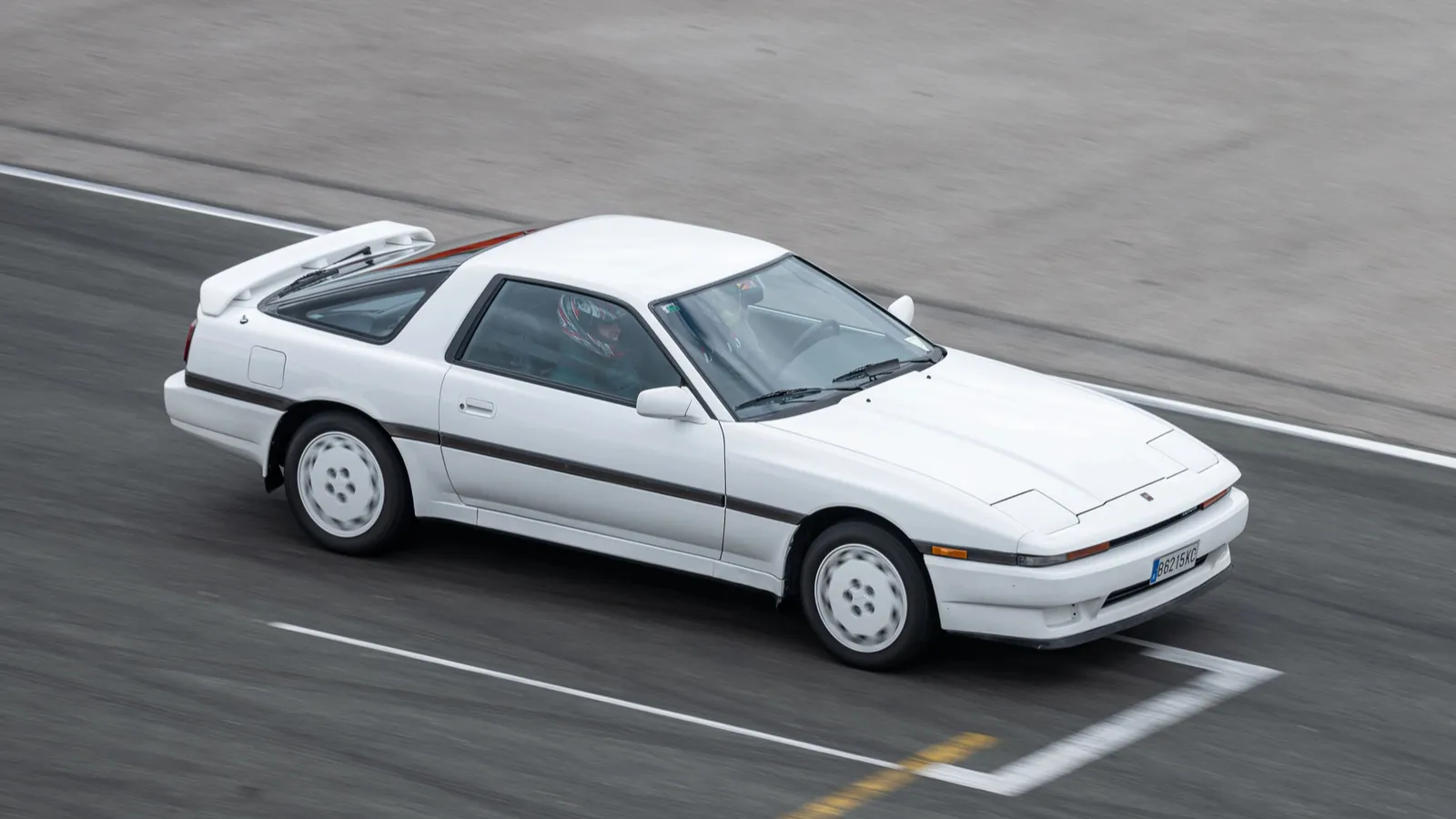
Image credits: wirestock_creators/Depositphotos
Japanese Muscle Cars Blended Technology and Speed
Japan’s take on the muscle car combined cutting-edge engineering with impressive performance. Iconic models like the Nissan Skyline GT-R and Toyota Supra featured turbocharged engines, rear-wheel or all-wheel drive, and aggressive designs that captured the imagination of enthusiasts worldwide.
Although they diverged from traditional American muscle car formulas, these Japanese classics embraced the same spirit: powerful engines, sporty looks, and speed-focused design. They became cultural icons and remain central to Japan’s performance car legacy.
Alt text: Toyota Supra an a70 mk3 on road
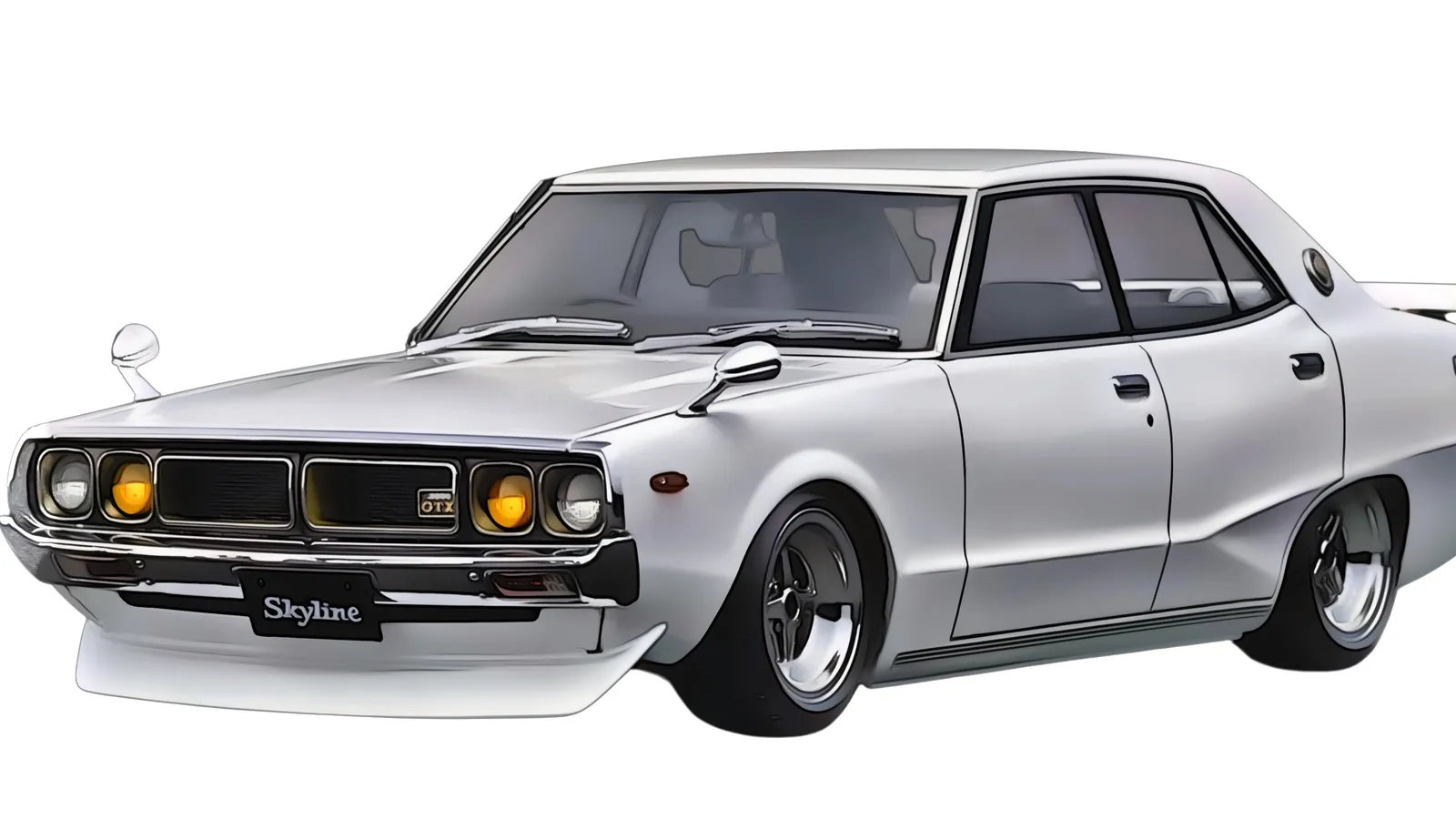
Image credits: flyingdoctor/Depositphotos
Nissan Skyline GT-R: A Japanese Muscle Icon
The Nissan Skyline GT-R, particularly the early “Hakosuka” models, gained global fame for its turbocharged engines, advanced AWD systems, and race-ready handling. This combination gave the GT-R both street credibility and track dominance.
With a blend of performance innovation and unmistakable style, the GT-R redefined what a Japanese performance car could be. It developed a massive fanbase that continues to grow, making it one of the most respected names in global car culture.
Alt text: Illustration of an isolated Nissan GT-R. High quality illustration
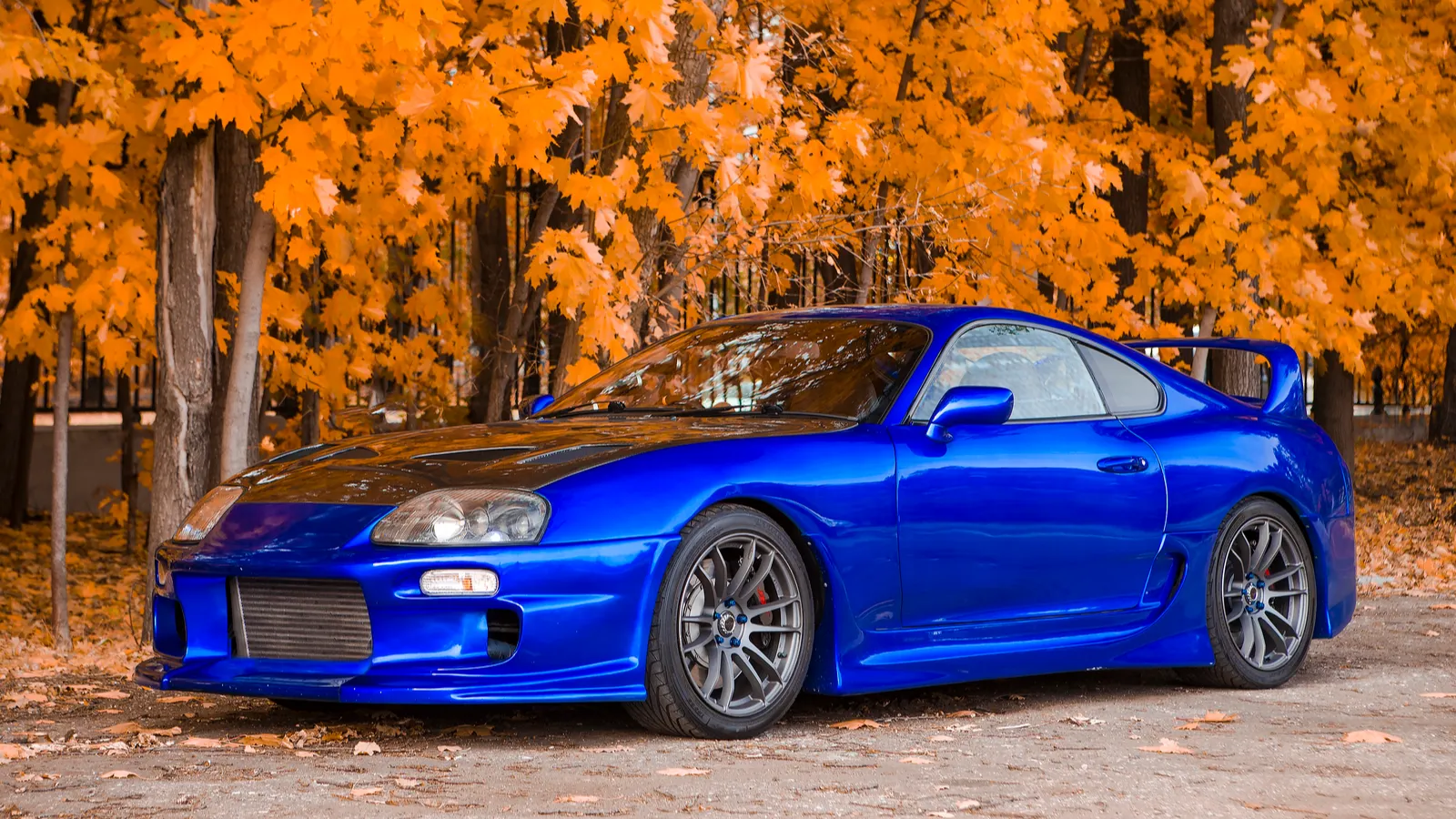
Image credits: midav_vadim/Depositphotos
Toyota Supra: Power and Precision in One Package
The Toyota Supra, especially in its third and fourth generations, brought together muscular engine options, such as the famed 2JZ inline-six, and aerodynamic styling. These elements delivered incredible speed and balance, capturing the hearts of muscle car enthusiasts around the globe.
Renowned for both its tuning potential and daily usability, the Supra became a symbol of reliable high-performance. Its blend of modern tech and raw driving pleasure made it a standout in the world of classic Japanese sports cars.
Alt text: Blue Toyota Supra on display
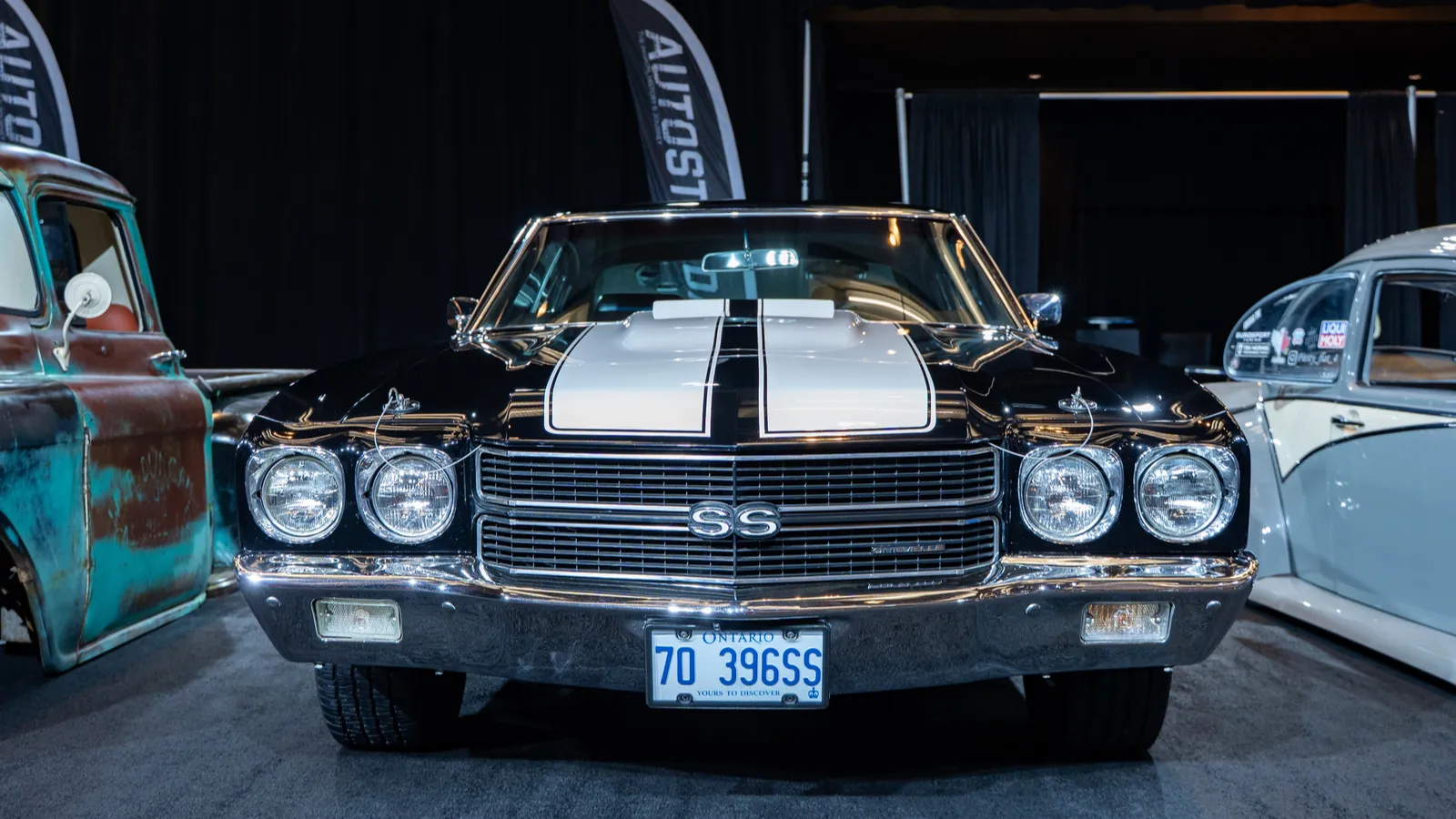
Image credits: egunes_/Depositphotos
South Africa’s Muscle Car Scene Had American Roots
South Africa embraced the muscle car movement by adapting American designs like the Chevrolet SS to suit local roads and markets. These V8-powered machines featured the same aggressive styling and performance characteristics that defined American classics.
Built for speed and rugged use, South Africa’s muscle cars found success in local racing and became cult favorites among collectors. They stand as a testament to the global reach of muscle car influence.
Alt text: 1970 Chevrolet Chevelle SS 396 automobile at the a car meet
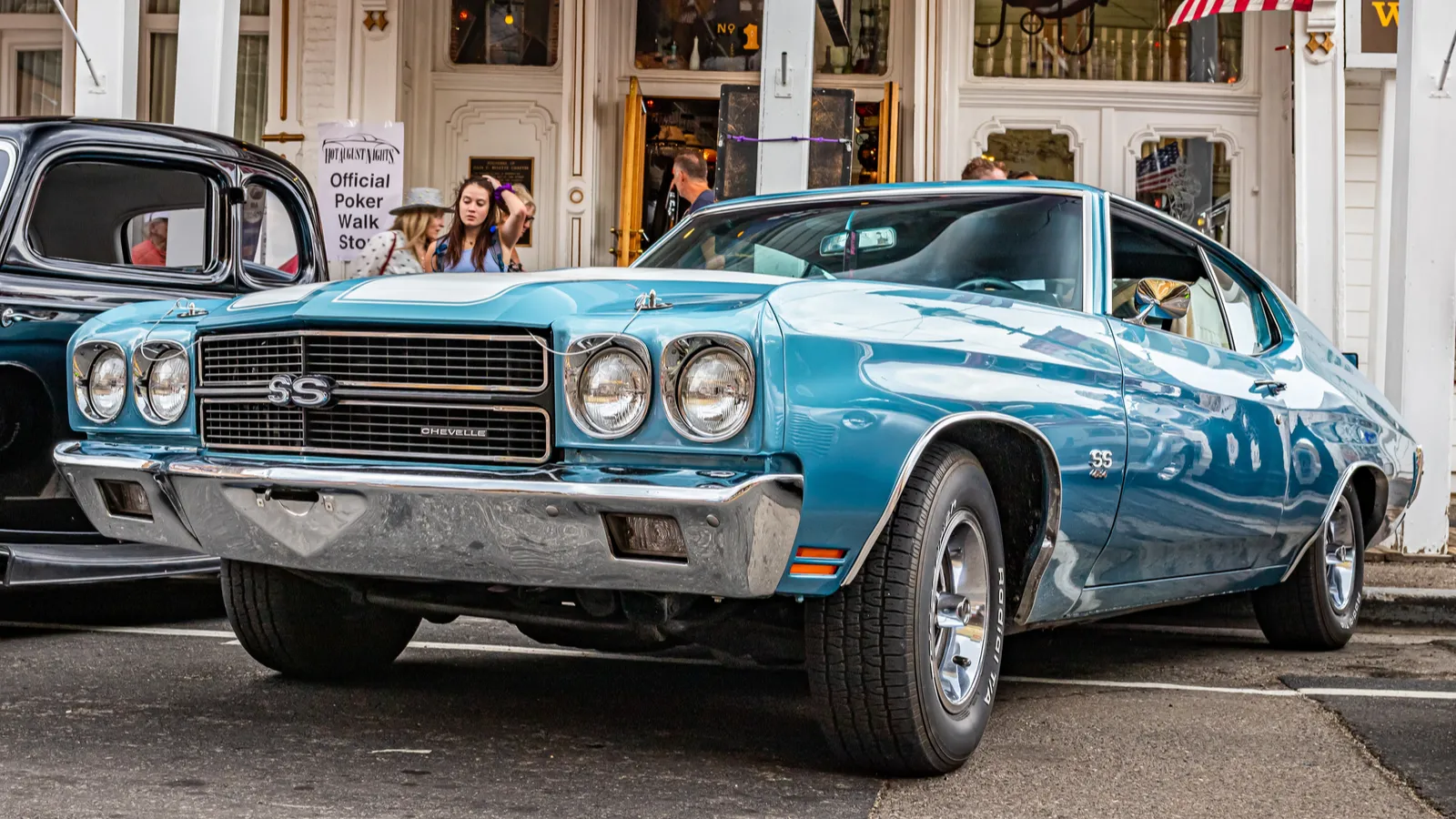
Image credits: adifferentbrian/Depositphotos
Chevrolet SS: South Africa’s Muscle Car Standout
The Chevrolet SS, produced specifically for the South African market, featured bold styling and potent V8 performance. Used in both drag racing and street driving, it became a central figure in South Africa’s performance car history.
Today, the SS is highly sought after by collectors and fans of international muscle cars. It reflects how South Africa carved out its identity in the vintage muscle car world.
Alt text: 1970 Chevrolet Chevelle parked
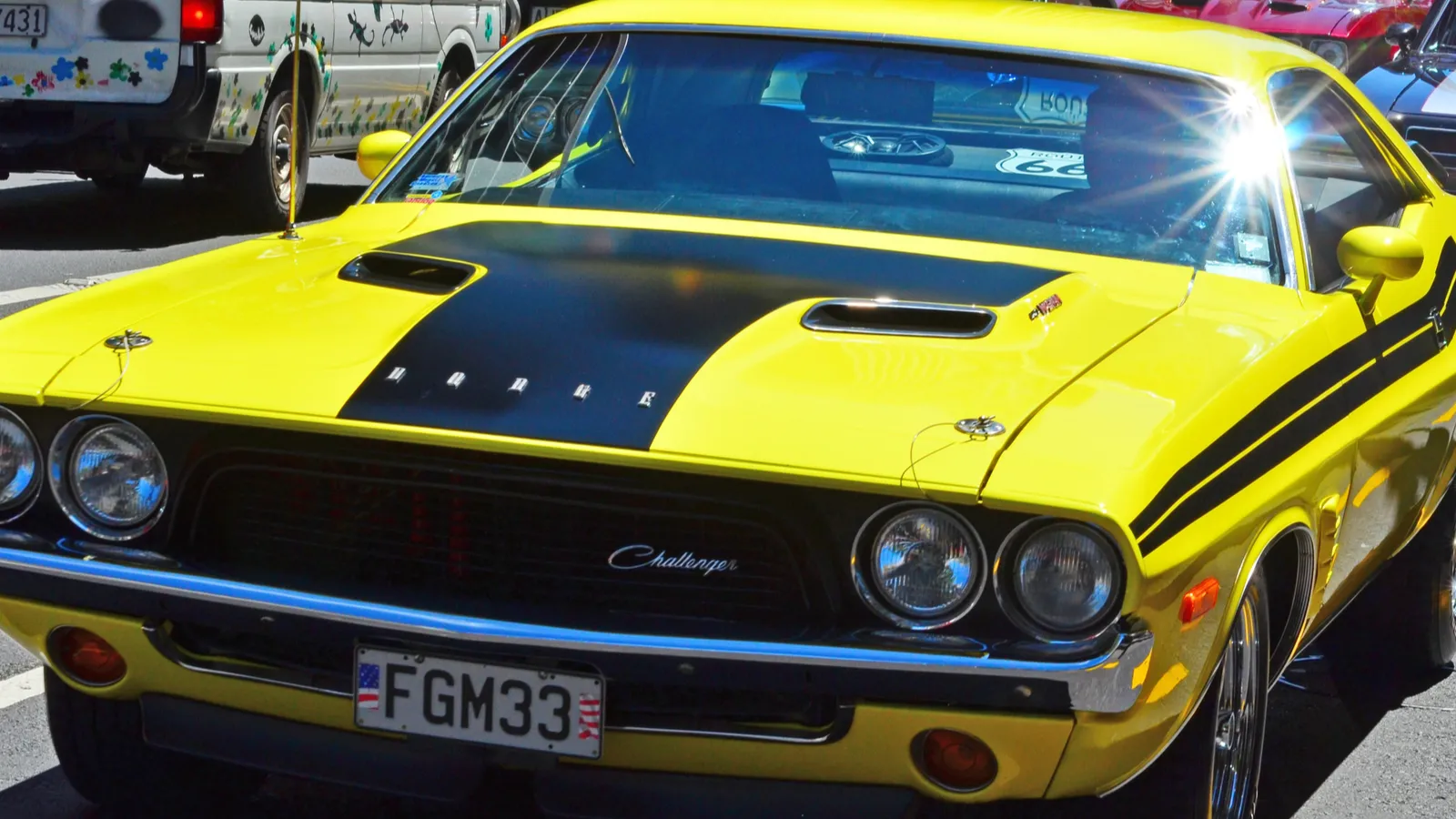
Image credits: lucidwaters/Depositphotos
Global Muscle Cars Adapted to Local Needs
Muscle cars outside the U.S. were often modified to meet regional regulations, emissions standards, and safety laws. These changes resulted in localized versions with different engines, suspensions, and body features.
Despite these adaptations, power, style, and excitement remained the core values. These tailored variants allowed the muscle car spirit to thrive in diverse environments, from Europe to South Africa and beyond.
Alt text: Dodge Challenger in a public us muscle cars V8 car
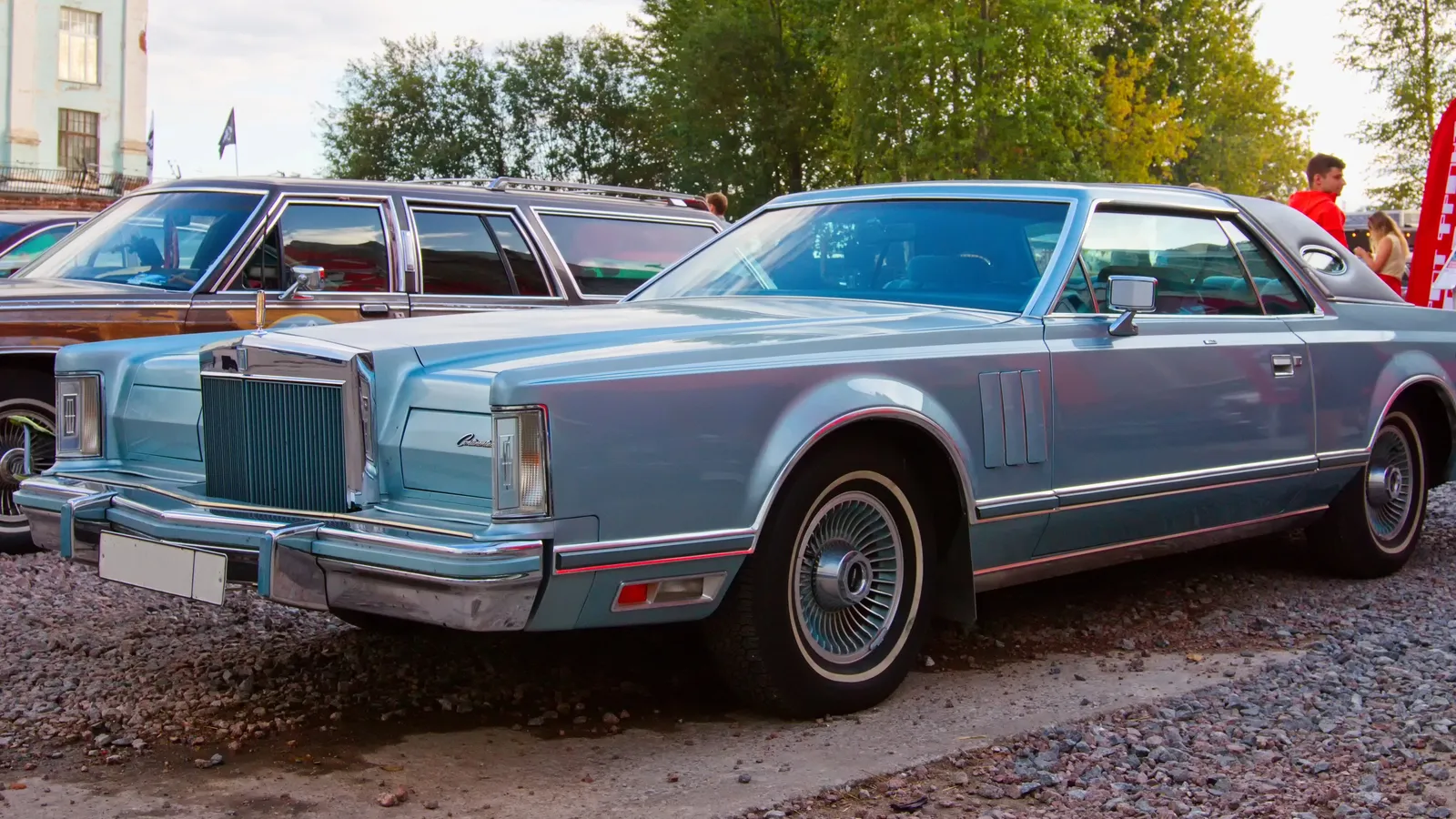
Image credits: olegmirabo/Depositphotos
Worldwide Muscle Cars Reflect Shared Passion
Though the muscle car concept began in the U.S., countries worldwide have embraced the idea of affordable high-performance vehicles. From Australia’s V8 coupes to Japan’s turbocharged legends, each region brought its twist.
This global appreciation fueled innovation and created a more diverse muscle car community. The international perspective only enriched the genre, proving that powerful cars with bold design are a universal thrill.
Alt text: Classical American vintage car Lincoln continental mark v 1977
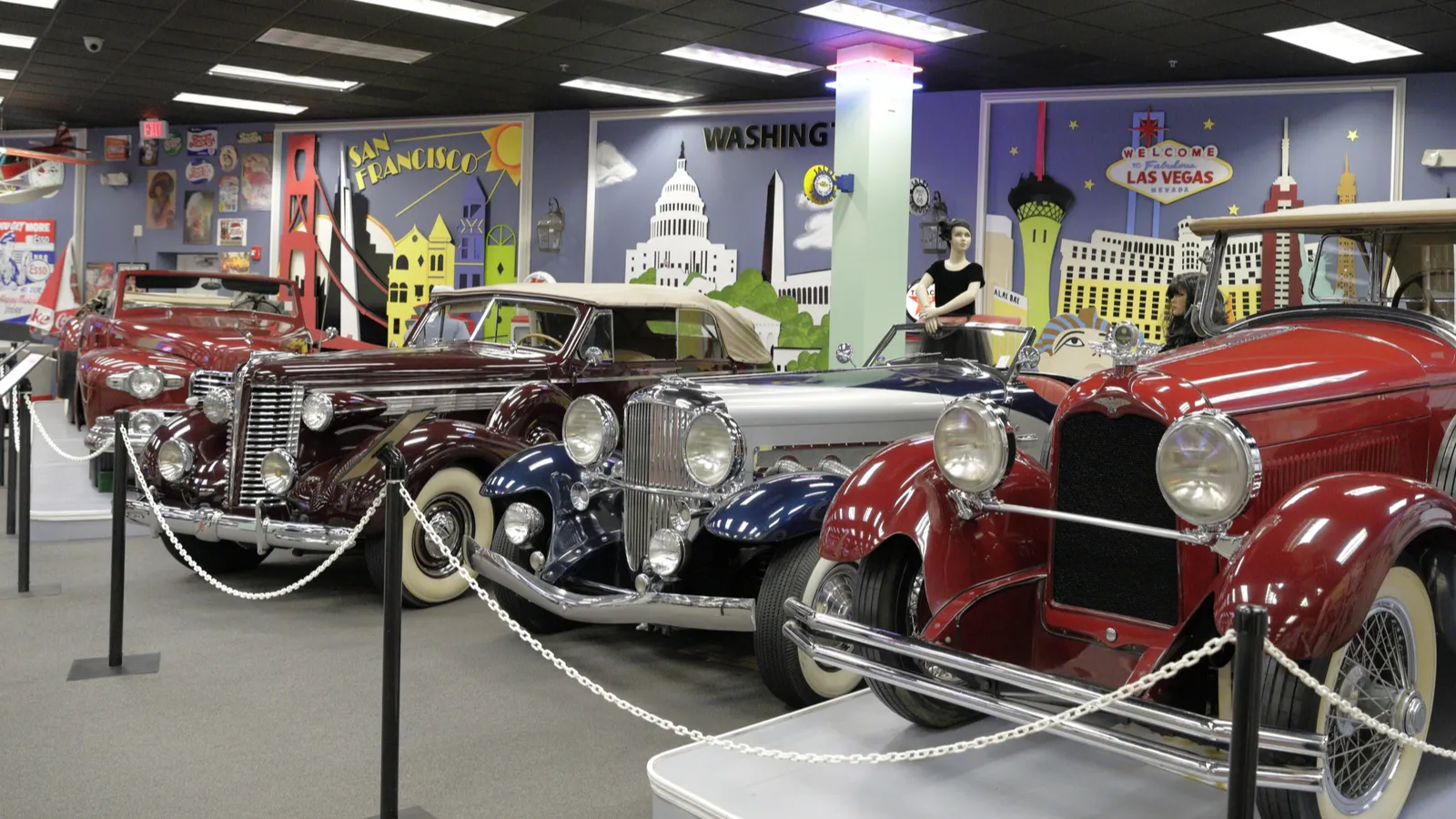
Image credits: felixtm/Depositphotos
Australia’s Muscle Cars Left a Global Impact
Vehicles like the Ford Falcon GT and Holden Monaro didn’t just dominate Australia—they made waves internationally. Their motorsport wins, rugged engineering, and timeless styling influenced muscle car culture worldwide.
Collectors and enthusiasts continue to celebrate these models as prime examples of classic muscle car craftsmanship. Australia’s contribution remains vital to the global legacy of vintage performance cars.
Alt text: Miami auto museum at the Dezer collection
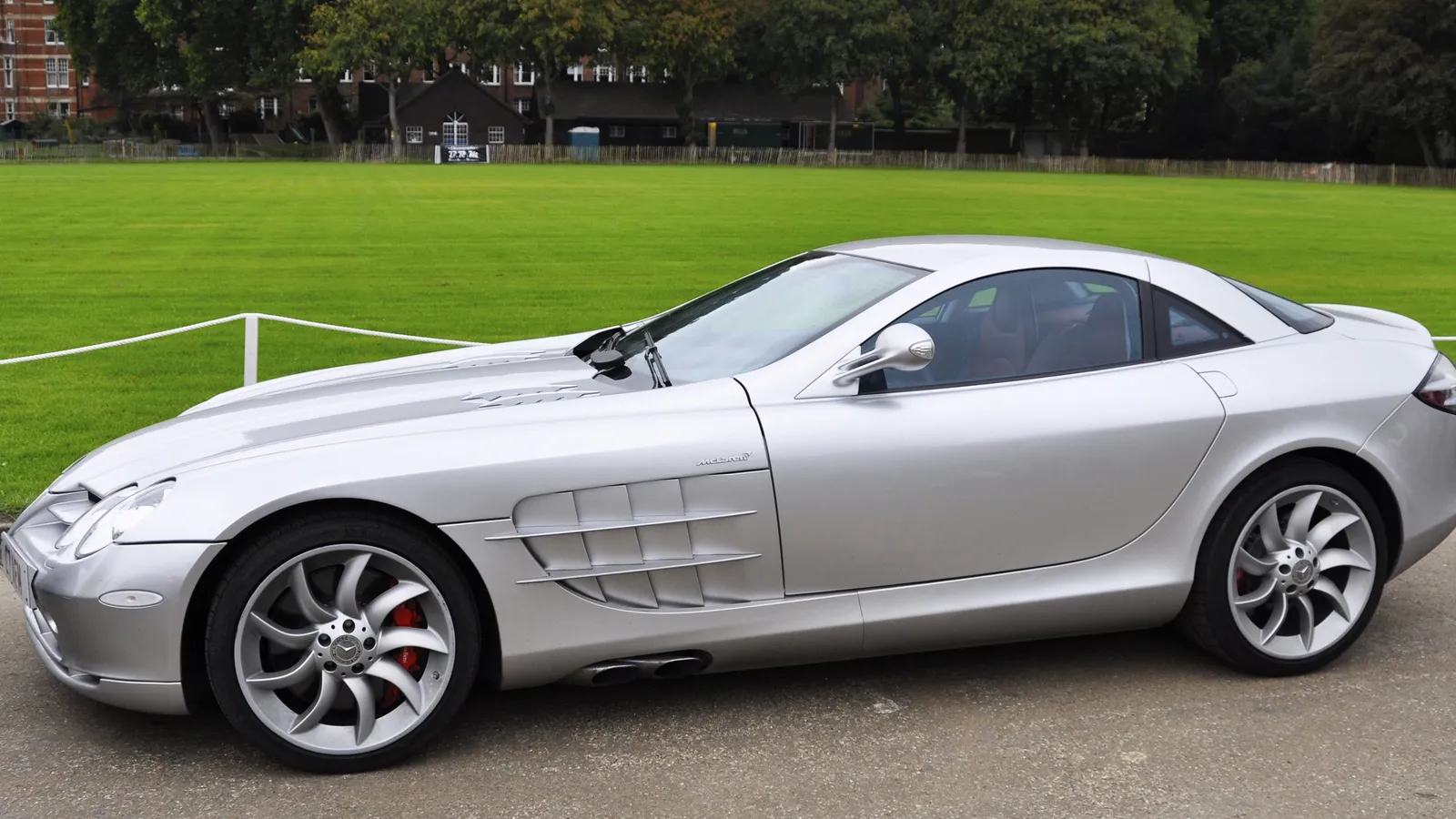
Image credits: dutourdumonde/Depositphotos
European Muscle Cars Blended Performance and Luxury
European muscle-inspired cars, such as those from BMW and Mercedes-Benz, offered a unique mix of power and refinement. These brands created high-performance coupes that delivered thrilling acceleration without sacrificing comfort or sophistication.
This blend expanded the muscle car market to include drivers seeking both exhilaration and elegance. The result was a new tier of performance vehicles that helped redefine what a muscle car could be.
Alt text: Mercedes SLR
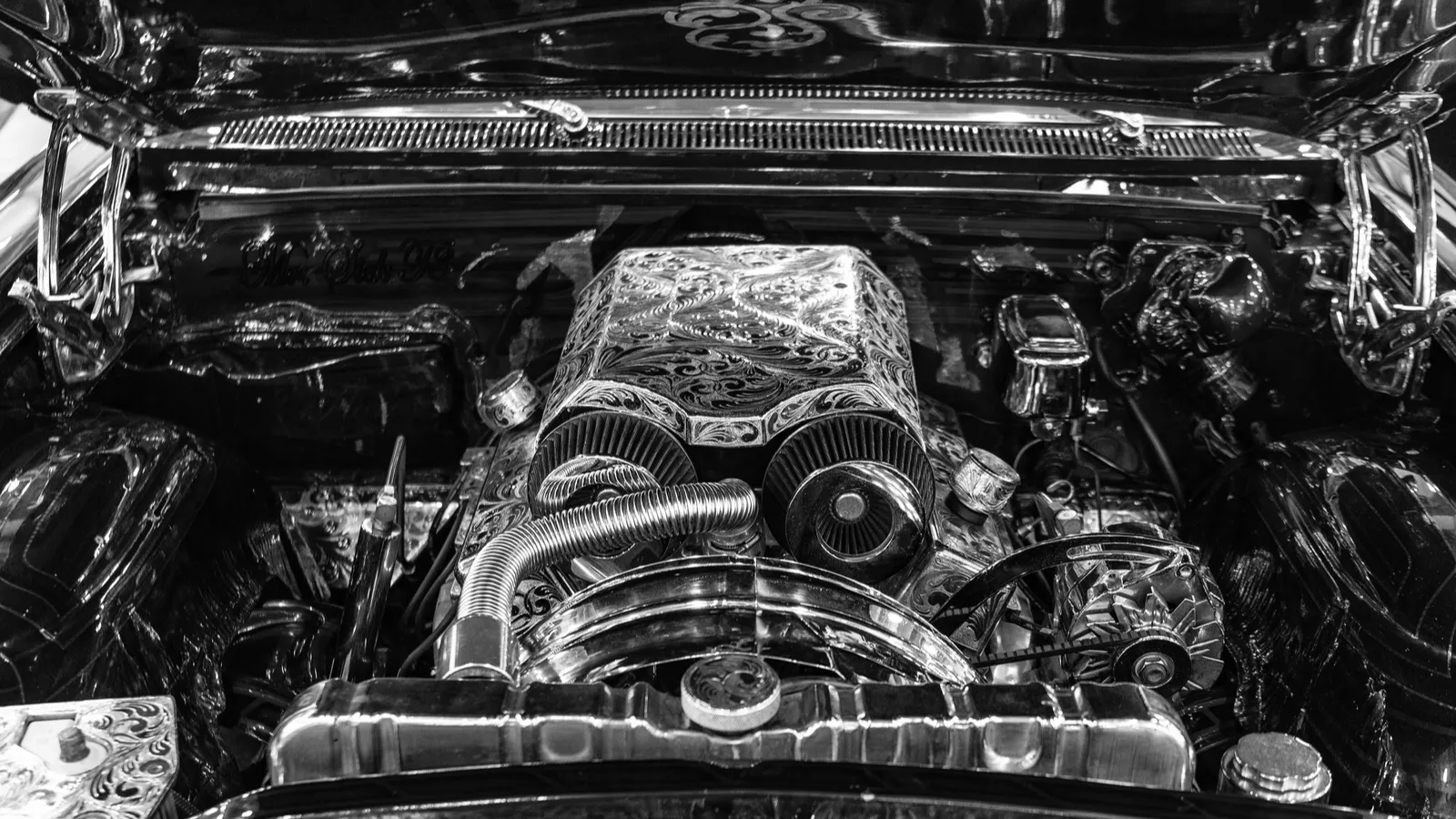
Image credits: stetsik/Depositphotos
The Muscle Car Legacy Lives On Worldwide
The spirit of the muscle car, immense power, bold looks, and a thrill on the road, continues to inspire modern vehicles across the globe. Whether it’s the roar of a V8 in Australia or a turbocharged inline-six in Japan, the essence lives on.
Classic muscle cars have evolved into a global phenomenon, influencing everything from design to engineering in today’s performance vehicles. The muscle car isn’t just an American story; it’s a worldwide passion.
Alt text: Chevrolet Impala axial motor engine
